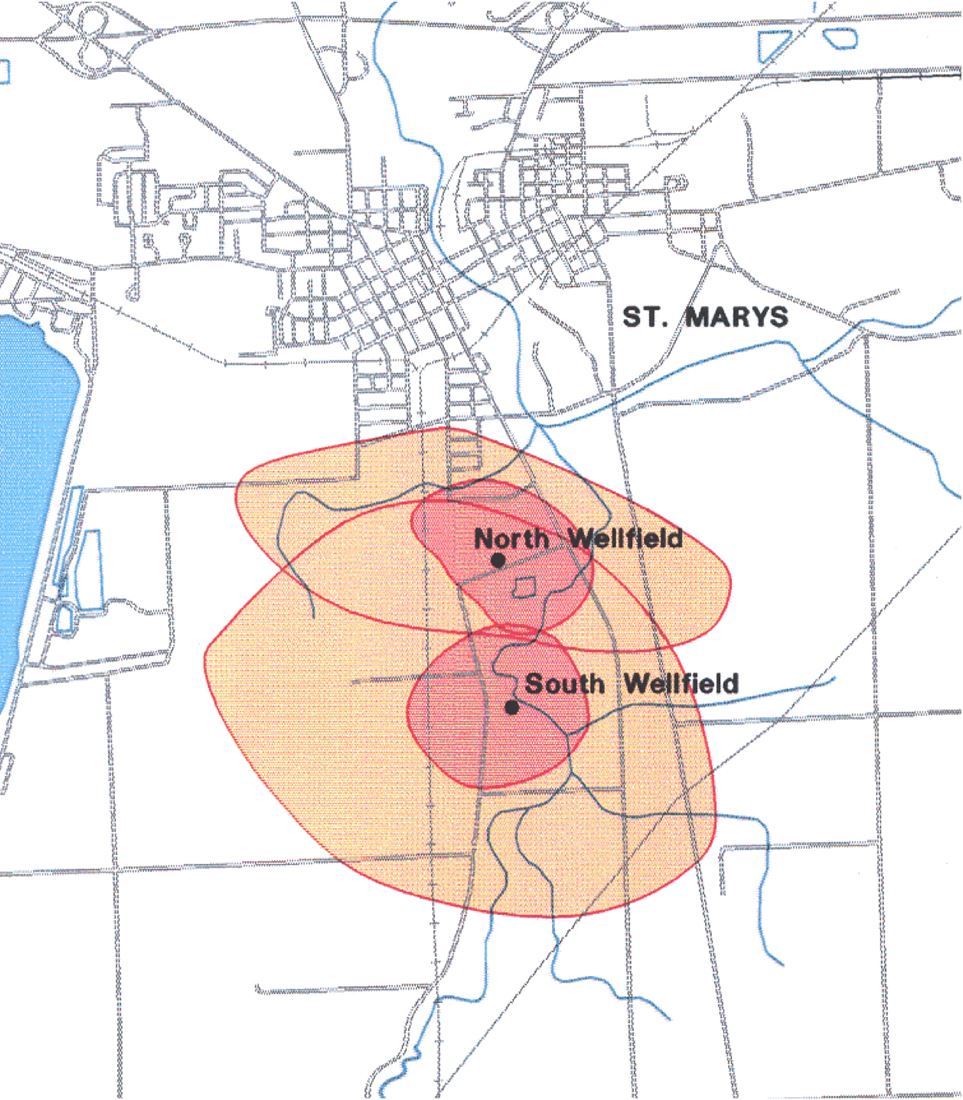- Home
- DEPARTMENTS
- Water & Wastewater
- Water
- Source Water Protection
Source Water Protection
- What is Source Water Protection?
-
Source water protection is a program to prevent pollution of the sources of water used for public drinking water. Source water protection planning consists of three phases:
- Determining where the water supplying a system is coming from.
- Identifying activities that have the potential of contaminating that water.
- Developing a plan to manage these activities to prevent contamination from occurring.
- Why Develop a Source Water Protection Program?
-
The main reason for implementing a source water protection program is to protect the health of people using the water by preventing contamination of the water supply. Another reason is to protect a community's investment in its' water supply. Since St. Marys relies entirely on groundwater for our water supply, everything in our source water protection program is for the protection of our wells and aquifers.
The costs of treating contaminated groundwater, or obtaining an alternate source, will be much greater than the costs of implementing a source water protection program. Groundwater moves very slowly. Once it is contaminated, it may remain so for a long time. It is difficult and expensive to locate and remove the contamination. It may require decades of treatment before the water is restored to drinking water quality, and in some cases, the contamination may never be completely removed.
Susceptibility to Contamination
In 2005, Ohio EPA completed a study of St. Marys' source of drinking water to determine its susceptibility to contamination. According to the study, the aquifers (water-rich zones below ground) that supply well water to St. Marys have a "moderate" susceptibility to contamination. The moderate rating does not mean the aquifers will become contaminated, but that conditions exist for the possibility of contamination.
Factors considered in the moderate susceptibility determination included:
- The depth of the aquifers (75 - 200 feet below ground level) and the presence of a thick layer of clay above the aquifers both serve to protect our well water.
- There has been no evidence to suggest that our well water has been impacted by any significant levels of chemical contaminants from human activities.
- The existence of numerous significant potential contaminant sources located near our wellfields.
 The City of St. Marys Source Water Protection Program
The City of St. Marys Source Water Protection Program
St. Marys has developed a Source Water Protection Program to minimize the likelihood of aquifer contamination through various protective measures designed to protect the aquifers. The development of the program consisted of three phases:
- Phase one identified the shape and area of our Source Water Protection Area and calculated one and five-year time-of-travel boundaries. These boundaries are significant in that they show how long a contaminant if discovered, would take to impact our drinking water source.
- Phase two included an inventory of potential pollution contamination sources, both historical and current, in or near the Source Water Protection Area.
- The third and final phase, completed in 2013, was the development of a written program. The program includes two activities authorized by Council: 1) formation of a Groundwater Protection Team to implement and oversee the program, and 2) Groundwater Protection Overlay District Zoning Regulations that serve to protect the City's groundwater sources through the imposition of zoning requirements in areas surrounding our wells.
Ohio EPA formally endorsed the St. Marys Source Water Protection Program on April 14, 2014. The importance of Ohio EPA endorsing the program is something St. Marys citizens should be very proud of.
Benefits of Source Water Protection include helping St. Marys provide the safest and highest quality drinking water to its customers at the lowest possible cost and to plan for future expansion, development, zoning, and emergency response issues.
More Information
More information about Source Water Protection or what consumers can do to help protect our water supply is available by calling 419-394-4114 or view the following information:
Source Water Protection Documents
- St. Marys Protection Plan (PDF)
- Appendix A Ordinances (PDF)
- Appendix B OEPA Susceptibility Analysis (PDF)
- Appendix C Potential Pollution Sources (PDF)
- Appendix D Education Outreach (PDF)
- Appendix E Emergency Response (PDF)
- Appendix F Delineation Report (PDF)
- Appendix G Pollution Sources Report (PDF)